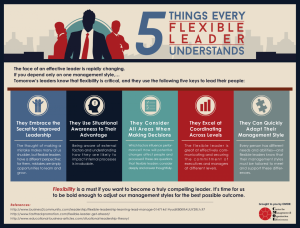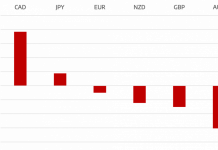
Every individual craves professional success to accomplish the goal of becoming a leader. Do you have what it takes to become a leader? In the 21st century, the role of leaders is beyond making decisions and passing instructions. They are responsible for driving revenue, expanding market share, and fostering innovation in the organization. Today, leaders have to make rapid decisions regarding market research and liquidity concerns to compete in evolving markets.
As a leader, you will encounter different challenges every day. From supply chain issues, financial roadblocks to low productivity levels – leaders have to run the show. Unfortunately, leaders don’t have a ‘solution book’ or ‘secret formulas’ to overcome challenges. They have to use their competencies to assess every problem from a different perspective. After all, what works in one situation is unlikely to work in other circumstances.
Although this journey can be challenging, developing some leadership muscles can help you move forward in the race. Instead of chasing after old-school leadership styles, focus on adaptability. If you are struggling as a leader, have a look below. Here are five ways to deal with various situations and challenges in the organization.
Embrace A Flexible Leadership Approach
Previously, the debate was between an autocratic and democratic leadership style, but as time evolves, there is no ‘best’ leadership style. These days, business environments are unpredictable and ambiguous as conditions, consumer preferences, and market dynamics are evolving rapidly. Therefore, leaders have to embrace a flexible approach that can be adapted to various situations. Are you looking to improve your leadership skills? If so, then you should enroll in an online leadership program to broaden your skill set.
It will help you adopt a situational approach to leadership that doesn’t believe in the ‘one size fits all’ concept. It equips leaders with expertise, skills, and knowledge to adjust to subordinates’ changing needs and situational demands. Alongside standard protocols, training programs will teach you different ways of dealing with a problem. Believe it or not, a leader following the situational approach can positively impact the organization, opening doors to growth.
Encourage Collaboration & Teamwork
Workplace conflicts are one of the most common challenges that leaders encounter. You might find workers complaining about the workload, strict deadlines, and challenging tasks. Unlike autocratic leaders, a situational approach to leadership can help find an opportunity in these challenges. As workers feel overwhelmed, you can introduce teamwork or encourage a collaborative working environment rather than spending time on conflict resolution strategies.
The presence of collaboration enhances productivity, distributes workload, and supports creativity in the organization. Statistics show 75% of employees prefer working in collaborative environments, which means teamwork can act as a significant motivating factor. If leaders fail to acknowledge the situation while proposing a solution, the entire organization suffers from loss of productivity. Thus, only the correct leadership approach can help improve efficiency in the workplace. You can check the efficiency of these approaches by using Qualtrics’ tools to measure employee engagement.
Decipher Situational Complexity
Successful leaders know their strengths and weaknesses as no human is perfect. A well-developed sense of self-awareness assists leaders to adapt to any given situation despite all complexities. Alongside delving into internal operations, they expand their horizons to comprehend things from a different perspective. For instance, if competitors have copied your idea due to an information leak, leaders first need to have an understanding of the situation before taking action.
Instead of blaming the employees for mismanagement, they look into systems to detect cyberattacks. This strategy identifies the problem and offers relevant solutions while ensuring no repetitive mistakes. The challenges in the coming years will keep getting tougher to decipher. If you fail to employ the correct approach for a given situation, surviving in the industry can become arduous. Thus, the only way to succeed is by transforming yourself into a situational leader who is willing to keep up with the rising advancements. After all, technological complexities will continue to surprise us.
Decision-Making with Speed & Precision
With the evolving dynamics of every market, leaders have to process information quickly and execute decisions. Sometimes, in a hurry to make decisions, leaders fail to acknowledge their relevance and accuracy. If you witness an influx of demand, you might decide to increase production capacity by purchasing a new plant through equipment financing. But what if your company is running into losses? A decision that seems correct in one situation can also be wrong under another condition.
Situational awareness is one of the top qualities of flexible leaders since it is imperative to understand the impact of decisions on internal processes. Therefore, you have to make decisions with conviction. Are you wondering how? Here are some tips.
- Define business priorities: Whether you want to focus on customer retention, expansion, advertisement, or profit maximization. Identify your goals and communicate them to the team for quick decision making.
- Smart Trade-Offs: Instead of thinking about every priority, set a scoring mechanism to make choices, and force trade-offs.
- Research: Support all your quick decisions with secondary data and research analysis. If you are trying a new marketing forum, look up the stats to determine whether it is worth investing or not.
- Seek Inspiration: If you follow the footsteps of successful leaders, try to put them in your situation and think about what decision they would make.
- Embrace Action: When making a decision, take full responsibility for actions as mistakes can happen.
Provide Direction to Subordinates
When we talk about addressing challenges in the organization, employees have an essential role to play. In addition to the leader, employees also have to adapt to the changing circumstances while dealing with complex situations. Influential leaders know how to engage, motivate, and thoroughly communicate with their employees. Hence, be clear and vocal about the evolving expectations and provide one-on-one feedback to track their progress.
Leaders can also host training programs or conduct workshops for employees. Instead of theoretical things, focus on practical implementation. You can give them hypothetical situations and assist in how to respond under high-pressure circumstances. If an employee is highly skilled, you can improve their soft skills to prepare them for the next step in their career. However, this only becomes possible with the help of situational leaders.
Final Thoughts
Technological transformations, new business practices, and changing customer tastes are making things challenging for leaders. They have to deploy ample resources and execute decisions that are best suited to the situation. After all, the old-school methods are no longer working in this modern era. Even after climbing up the professional ladder, continue to sign up for training programs or online courses to adopt a pertinent leadership style. As they say, learning and leadership are indispensable to each other.
This is an article provided by our partners’ network. It does not reflect the views or opinions of our editorial team and management.
Tradersdna is a leading digital and social media platform for traders and investors. Tradersdna offers premiere resources for trading and investing education, digital resources for personal finance, market analysis and free trading guides. More about TradersDNA Features: What Does It Take to Become an Aggressive Trader? | Everything You Need to Know About White Label Trading Software | Advantages of Automated Forex Trading










































